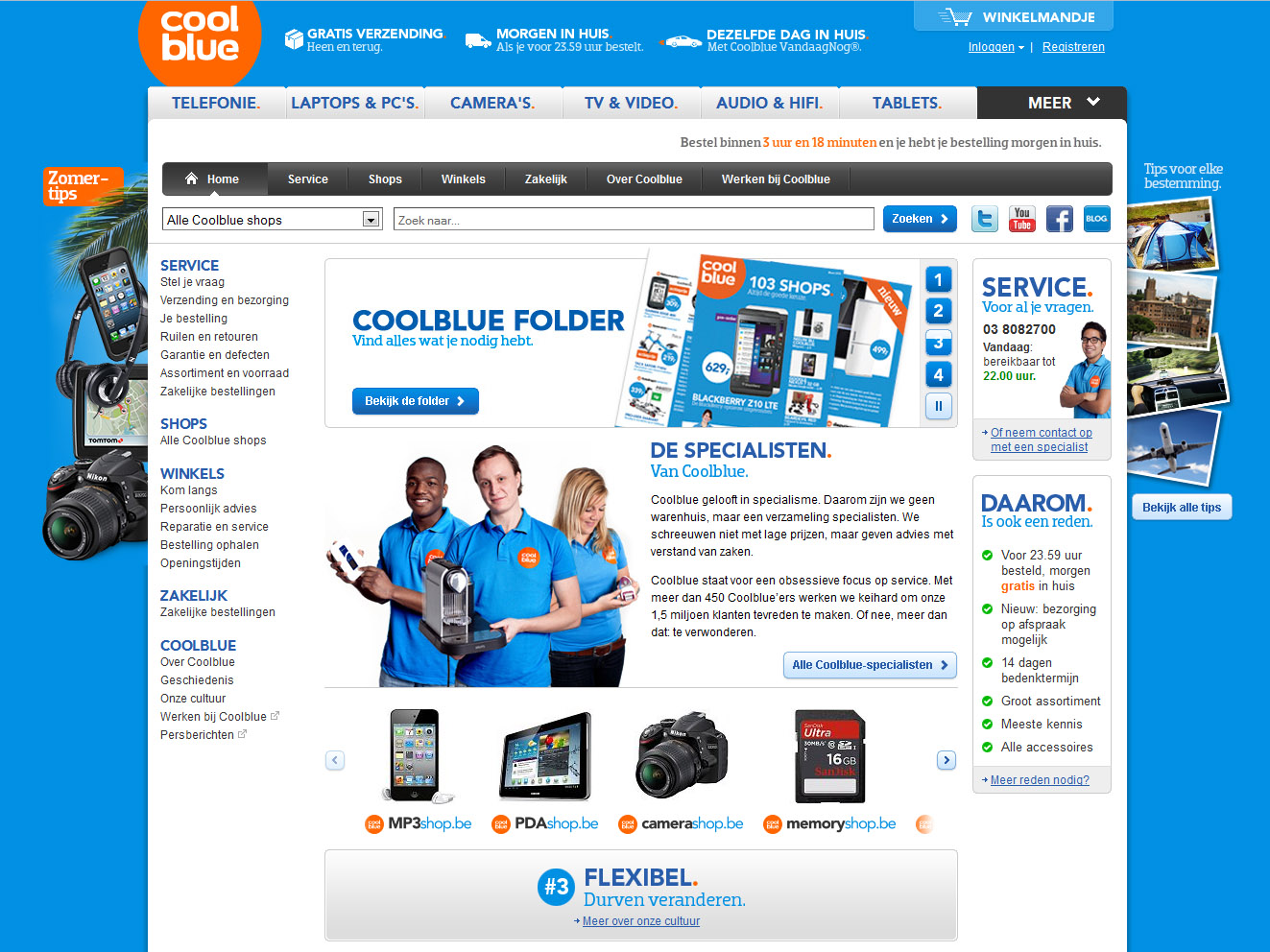
I recently attended an internal BPost event where externals speakers went to give a speech and inspire the audience. This event had been organized at the initiative of BPost COO Peter Somers and it was a great opportunity to better understand the strategy of the group as it was explained to investors during the pre-IPO phase (which has been a big success by the way).
Two speakers had been invited: Google Belgium CEO Thierry Geerts and CoolBlue Belgium CEO Werner Bruyns.
I was extremely interested to hear Werner’s presentation on Coolblue and how customer satisfaction is at the centre of Coolblue’s strategy to drive revenues and customer loyalty.
Coolblue leverages free shipping and free returns very well (see here the article we dedicated to the effects of free returns on average customer spending) and has partnered with BPost for several years to offer top-class delivery services to end consumers.
Werner shared with the audience a few of Coolblue’s best practices to keep customers satisfied. I thought it would be interesting to share them with you to.
Service representatives have no sales target
This is a awesome best practice that few have applied actually. Just compare it with DELL. If you ever contact DELL service (for instance to inquire about a spare part for your computer), you’ll get an offer in your mail within 30 minutes and if you have not ordered after 24h you’ll get a call from a service representative to encourage you to order. The sales speech will invariably start “the spare part has already been packaged for you and is ready to be shipped”. For customers who don’t like to be put under pressure my guess is that CoolBlue’s approach will be better accepted
Net Promoter Score measured with one question
And the question is … “If you had a company, would you hire the service representative you just talked to ?”. There are many variants of measuring NPS; there are also many variants of measuring customer satisfaction. The best and more robust way to measure satisfaction is actually to use what we call “multiple-item scales”. In other words the overall score is the result of several questions that help correct the variance of individual questions and consolidate everything in a global score with less variance. The NPS tries also to mimic the customer satisfaction results but is based on a word-of-mouth approach that is important to increase a business reputation.
If a product is not on stock it’s not displayed on the website
This is a very strong policy that aims at cutting the roots of dissatisfaction. As a 2003 study by Holloway and Beatty revealed, the consequences of not having products on stock while still selling them are terrible for customer satisfaction. In their study Holloway and Beatty showed that almost one fourth (22.9%) of all online complaints were the consequence of either a delay in the delivery (which is usually caused by a product not being on stock) or a product sold although it was not on stock.
Advice for your marketing strategy
Everything has been said and done around and about customer satisfaction. As we have explained in our white paper on customer satisfaction, the practices related to customer satisfaction have lost of their efficiencies but are still deeply anchored in the daily lives of large companies. It is therefore difficult to bring in new ideas that can refresh the existing model. But as you can see, managers and visionaries like Werner propose new ways and new methods that are worth following up.
Posted in Marketing.

